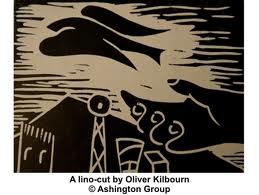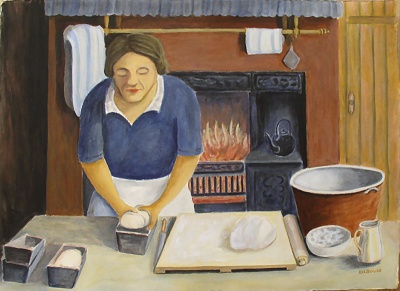|
|
 |
|
| John Stewart & T.R. Knight |

|
| Life in the Theatre |
Life in the Theatre vs. Life in the Coal Mines
|
 |
David Mamet paints a bleak and cynical picture of Life in the Theatre in the revival of his 1977 play of the same name currently in previews at the Gerald Schoenfeld
Theatre– two actors (played as well as one could expect by Patrick Stewart and T.R. Knight) are jaded and only superficially
moved by the work they do. When we observe them “on stage” in the
various scenes of the plays within the play, they are on auto-pilot either attempting
a “poignant” but shallow and one dimensional soliloquy or slogging through predictable slapstick shtick
(a zipper that won’t stay closed, a phone that rings after it is picked up, etc).
Likewise,
there’s not much life before or after
the theatre either as the depressed older veteran (Stewart) and the self-involved new-comer (Knight) spend an awful lot of
time congratulating and complimenting each other’s scenes while putting on and taking off makeup or hanging out backstage. I found myself losing patience with the theme early on, thinking: here are talented
(and privileged) artists who are making a living at their craft, albeit at the mercy of the playwright and production team
(in this case Mamet and director Neil Pepe), and never seem to derive much satisfaction from their art. Worse yet, they feel trapped within their creative but unfulfilled worlds.
Unfortunately, Mamet provides little substance for much empathy or indeed interest in their fate.

In The Pitmen Painters, Lee Hall, (author of Billy Elliot) paints a very different portrait on a related
theme based on a true story: a group of coal miners in the late 1930s decide they want to learn more about art and hire a
teacher to lecture them on art history. The teacher, Robert Lyon decides the
best way to appreciate art is to experience it firsthand so he has them create
their own original art and then critique each others’ works.
Despite continuing to spend nine hours a day hauling coal in the mine, the workers gradually hone their skills
both in creating and critiquing art – a group of them go on to become well renowned artists known collectively as The
Ashington Group. Compared to the alienated professional artists depicted in Life in the Theatre, these amateur painters were much more connected with and proud
of their art. Crossing class and cultural barriers is not easy however, and not
without conflict. Issues of loyalty, class consciousness, self confidence and
creative freedom are woven throughout to make the theatrical experience layered and engaging.
Following a successful run in the U.K. most of the original ensemble cast and director Max Roberts have joined the
U.S. debut at the Manhattan Theatre Club Samuel J. Friedman Theatre.
While this particular double-header made for an interesting theatrical juxtaposition, you might want to take
an intentional pass on Life in the Theatre and instead head straight for The Pitmen Painters.
| Oliver Kilbourne, Baking I, Acrylic on paper |

|
| ŠThe Ashington Group |
Images from The Ashington Group collection used with permission. You can see
more examples from their collection at their web site: www.ashingtongroup.co.uk
|
 |
|
|
 |
|
|
 |
|
|
|
|
|
|
 |

